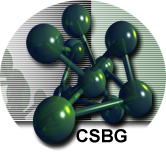Q: What are exactly the input and background sets for the enrichment analysis and what should I provide there?
A: The input set is the set of organisms for which you want to extract the overrepresented annotations/features using enrichment analysis. This analysis requires a background set of organism to compare against, in order to estimate the probability of obtaining a given annotation by chance. In most cases, using the whole database as background (default option) should be ok. But in certain situations it can be better to use another background (e.g. to calculate deviations from what is expected in a given taxonomic group). See the Tutorial section for examples.
Q: Why searching for certain TaxIDs does not produce any results even if there are organisms in the database matching them? (e.g. 2157 –Archaea-)
A: Only TaxIDs of terminal nodes of the NCBI taxonomy tree are stored. TaxIDs of internal nodes (i.e. those corresponding to organism clades) are not stored. Consider using the Taxonomy (Term Name) search box instead.
Q: How can I search for all organisms of a given taxonomic group (e.g. Archaea)?
A: Use the Taxonomy (Term Name) search box instead of Taxonomy ID.
Q: I know this organism has a certain feature (i.e. resistance to a given antibiotic) but the database does not reflect that. Why?
A: That feature is not annotated in the primary sources from which we import the data. Consider contacting the curators of that resource for correcting it.
Q: How can I use a stored list of organisms resulting from a database search (Download organisms button) as input or background set for an enrichment analysis?
A: Just remove from the file the column with the organism names (e.g in MS-Excel), leaving only the column with the TaxIDs. Note that this is only necessary if you want to store that list of organisms (and/or edit it) for a future usage. If you want to use the list resulting from the current search for an enrichment analysis just check the corresponding Use search results checkbox.
Q: I have obtained interesting results using this server, how can I aknowledge it?
A: Cite the use of the Bacterial Features Finder with the following reference:
- Javier López-Ibáñez, Laura T Martín, Mónica Chagoyen, Florencio Pazos. (2019). Bacterial Feature Finder (BaFF)—a system for extracting features overrepresented in sets of prokaryotic organisms, Bioinformatics. DOI:10.1093/bioinformatics/btz099
Contact
Florencio Pazos: pazos{at}cnb.csic.es.
Javier López-Ibáñez: jlopezibanez{at}cnb.csic.es.
